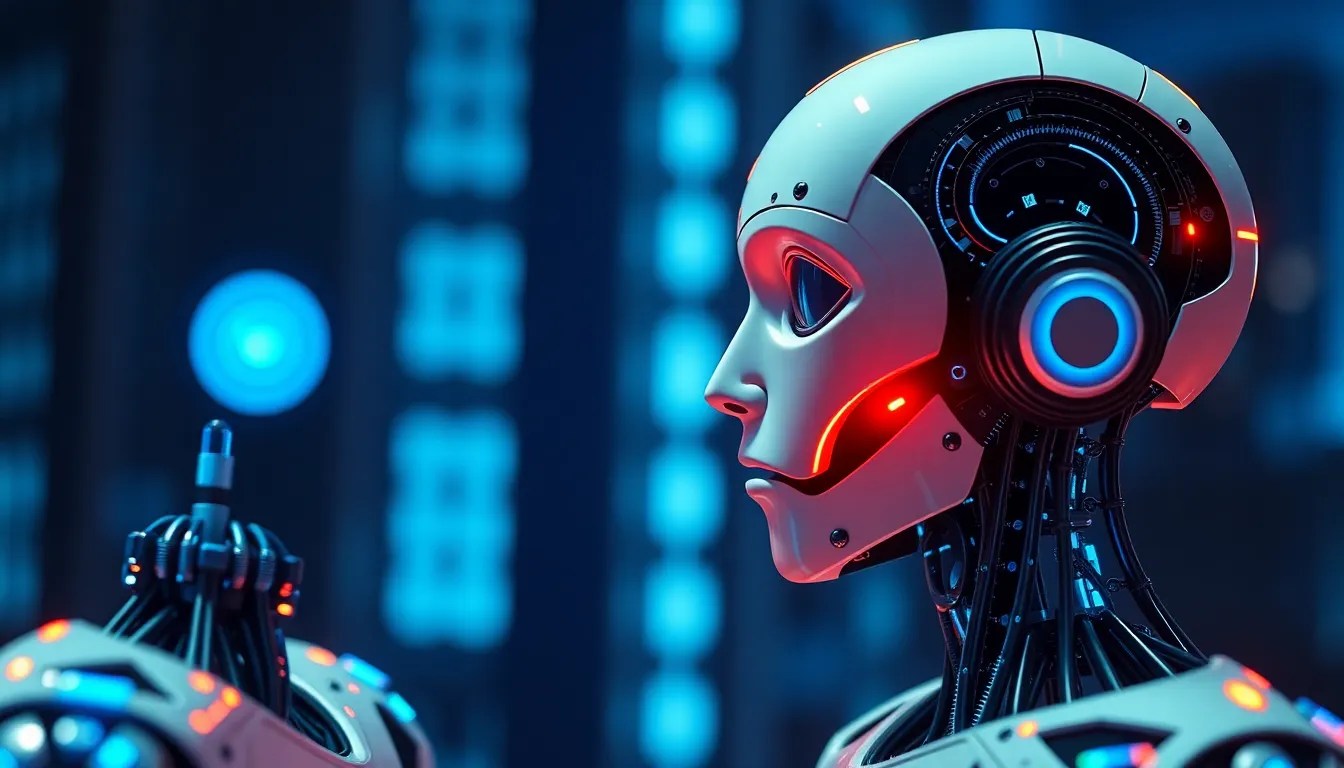Deep Learning and the Evolution of Chatbots: AI Conversations Redefined
I. Introduction
Deep learning is a subset of artificial intelligence (AI) that uses neural networks with many layers (hence the term ‘deep’) to analyze various forms of data. It has gained significant attention in recent years, primarily due to its ability to process vast amounts of information and improve performance in tasks such as image and speech recognition, natural language processing, and more. One of the most exciting applications of deep learning is in the realm of chatbots, which are evolving from simple scripted interactions to sophisticated conversational agents capable of engaging users in meaningful dialogue.
This article aims to explore how deep learning is reshaping chatbot interactions, examining the fundamental concepts of deep learning, the historical context of chatbot technology, the revolutionary techniques being employed today, real-world applications, challenges faced, and future predictions for this rapidly evolving field.
II. The Fundamentals of Deep Learning
At the core of deep learning lies the concept of neural networks. These networks are inspired by the human brain’s architecture and consist of interconnected nodes, or neurons, that process information in layers. The basic structure includes:
- Input Layer: Receives the initial data.
- Hidden Layers: Multiple layers that transform inputs into outputs through weighted connections.
- Output Layer: Produces the final prediction or classification.
The success of deep learning models heavily relies on data. Training these models requires vast amounts of labeled data to adjust the weights of the network’s connections effectively. This process allows the model to learn patterns and make predictions about new data.
When comparing traditional AI methods with deep learning approaches, several differences emerge:
- Traditional AI: Relies on rule-based systems and predefined algorithms, limiting flexibility and adaptability.
- Deep Learning: Learns from data, enabling it to improve over time and handle complex tasks with greater accuracy.
III. The Historical Context of Chatbots
The evolution of chatbots can be traced back to early developments in AI. Two notable examples are ELIZA and ALICE, which were among the first attempts at creating conversational agents. ELIZA, developed in the 1960s, used simple pattern matching to simulate conversation, while ALICE, created in the 1990s, improved upon this with a more sophisticated rule-based approach.
However, these early chatbots had significant limitations:
- They operated on fixed scripts, leading to repetitive and often unengaging interactions.
- They struggled to understand context and user intent, resulting in frustrating experiences for users.
As technology progressed, there was a noticeable shift from these simple text-based interactions to more complex conversations, paving the way for the integration of deep learning in chatbot technology.
IV. Deep Learning Techniques Revolutionizing Chatbots
Deep learning has introduced several advanced techniques that are transforming the capabilities of chatbots:
- Natural Language Processing (NLP): Enhancements in NLP have empowered chatbots to understand and respond to human language more effectively. Techniques such as tokenization, sentiment analysis, and entity recognition have facilitated more natural interactions.
- Sequence-to-sequence models: These models, particularly those utilizing attention mechanisms, allow chatbots to generate contextually relevant responses based on the entire conversation history rather than isolated inputs.
- Reinforcement learning: This approach enables chatbots to learn from their interactions with users over time, refining their responses based on feedback and improving user satisfaction.
V. Real-World Applications of Deep Learning Chatbots
The integration of deep learning in chatbot technology has led to numerous real-world applications, including:
- Customer Service and Support: Many businesses utilize chatbots to handle customer inquiries, providing instant responses and freeing human agents for more complex issues.
- Healthcare and Mental Health Applications: Chatbots are now being used for patient triage, appointment scheduling, and even mental health support, offering accessible resources for patients.
- Personal Assistants and Smart Home Integration: Virtual assistants like Siri and Alexa leverage deep learning to understand user preferences and control smart home devices seamlessly.
VI. Challenges and Limitations of Deep Learning Chatbots
Despite their advancements, deep learning chatbots face several challenges:
- Bias and Ethical Considerations: Chatbots can inadvertently learn and perpetuate biases present in the training data, leading to unethical outcomes.
- Understanding Context: Maintaining a coherent conversation flow and understanding nuanced user intent remains a significant hurdle.
- User Trust and Security: Ensuring user privacy and building trust are paramount as chatbots handle sensitive information.
VII. The Future of Chatbots and AI Conversations
The future of chatbots is promising, with several predictions for their evolution:
- Increased capabilities in understanding and generating human-like responses, making conversations feel more natural.
- Greater human-AI collaboration, where chatbots assist rather than replace human interaction, enhancing user experiences.
- Wider adoption across various industries, revolutionizing sectors such as education, finance, and entertainment.
VIII. Conclusion
In summary, deep learning has dramatically impacted chatbot technology, enabling them to engage users in more meaningful and complex conversations. As we continue to innovate in the field of AI, understanding the implications of these advancements is crucial for harnessing their full potential. The evolution of chatbots represents just the beginning of a broader transformation in human-computer interactions, and ongoing exploration in this area is essential for realizing the benefits of these technologies.
As we look to the future, the call to action is clear: we must continue to explore and understand AI developments to navigate the challenges and opportunities they present.



